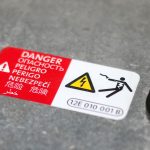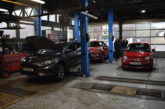Hybrid and electric vehicles are gradually coming to the forefront of vehicle technology and it’s important that the modern independent garage has the proper procedures in place to be able to work safely on these new machines. For this reason, Sealey talks through the safety precautions needed when handling dangerous electrical components.
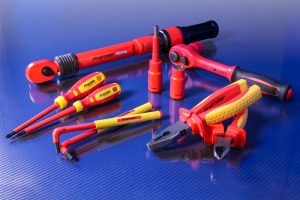 Motor vehicle technology has been constantly changing and evolving ever since the very first vehicle was produced. It is fair to say that, while the last ten years have seen some major advances in car design, the next ten years are likely to see even more rapid changes in the types of vehicle seen in workshops. While new car sales of hybrid, electric and connected cars are rapidly increasing, diesel vehicles are realistically likely to see a marked decline in registrations in future years. A recent survey revealed that 85% of motorists would consider buying an electric or hybrid car. Independent garages typically see cars in the five to ten year old age group being presented, but it’s time to take a look at the cars being sold in 2017. It is highly likely these cars will be sitting in your workshop in a few years from now.
Motor vehicle technology has been constantly changing and evolving ever since the very first vehicle was produced. It is fair to say that, while the last ten years have seen some major advances in car design, the next ten years are likely to see even more rapid changes in the types of vehicle seen in workshops. While new car sales of hybrid, electric and connected cars are rapidly increasing, diesel vehicles are realistically likely to see a marked decline in registrations in future years. A recent survey revealed that 85% of motorists would consider buying an electric or hybrid car. Independent garages typically see cars in the five to ten year old age group being presented, but it’s time to take a look at the cars being sold in 2017. It is highly likely these cars will be sitting in your workshop in a few years from now.
As an industry, we have to take a proactive approach to these technologies. As an independent garage embracing these vehicles, you will have a distinct advantage over those who decide to shy away from them. The most common question technicians ask when thinking about working on hybrid or electric vehicles is: Are these systems safe to work on? Let us look at this question in two ways. Yes, the high voltage system does present a hazard if someone is exposed to an electric shock from a high voltage vehicle battery, as it will almost certainly result in a fatality. If you have never seen inside a hybrid vehicle battery pack, pictured over the page is an example of a Toyota Prius one. Each of the twenty-eight cells is 7.2V, which gives a total of 201V DC.
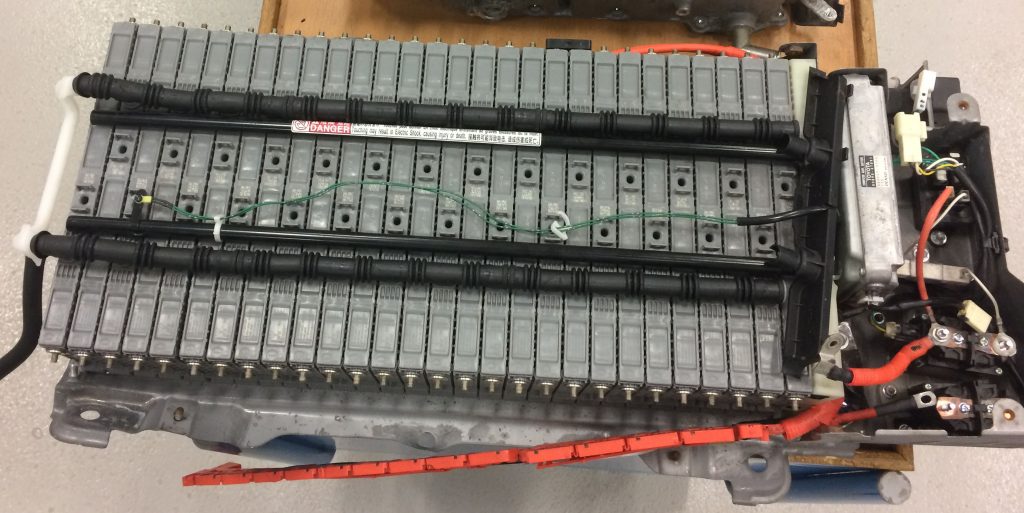
Now let us examine hazard versus risk. We know the hazard is present, but by following the correct procedures, the risk of being exposed to this hazard is very small. You cannot completely remove any potential hazard, but you can minimise the risk to a safe enough level to be able to work on the vehicle. It is vital to adhere to the vehicle manufacturer’s safety precautions and to use the correct tools and PPE. Never follow information that is not supplied by the manufacturer of the vehicle being worked on.
Any component on the vehicle that has the risk of electric shock will carry a warning label. All of the high voltage cables are coloured orange.
This brings us to what is required to safely work on a hybrid or electric vehicle. The vehicle being worked on should be placed in an exclusion zone, which should be at least 1.5m around the vehicle. Four of the Sealey RWPB01 posts and an HSC25M safety chain will provide a barrier suitable for most vehicles. High voltage warning signs, such as the Sealey HVSA4, should be placed at the perimeter to warn of the hazard, and warning signs should be placed on the vehicle itself.
Once you are familiar with the procedure for isolating the high voltage battery by following the
instructions supplied with it, it is also vital to use the correct PPE. The Sealey HVM17K02 High
Voltage Electrician’s Mat should be placed on the floor where the technician will be working. This mat has been subjected to independent testing, and is certified for safe working up to 17,000V.
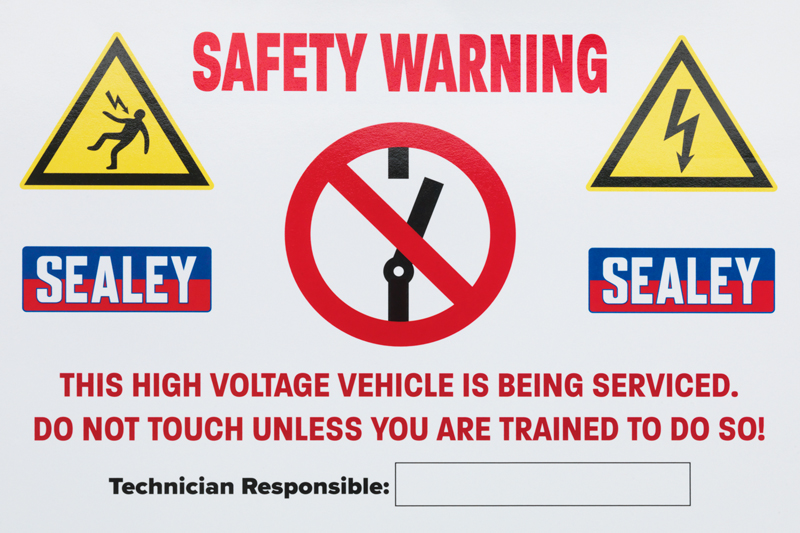
High voltage electrician’s gloves must be worn before commencing work. It is vital to wear the correct type of ‘class 0’ gloves. The Sealey HVG1000VL High Voltage Electrician’s Gloves have also been independently tested and are certified for safe working up to 1000V. By using the correct PPE and following the vehicle manufacturer’s instructions to isolate the high voltage battery, you will now be able to safely carry out your service or repair work.
Further protection against the risk of electric shock can be achieved by using VDE approved hand tools which comply with B.S EN60900. Sealey offers a comprehensive range of tools which comply with these standards.

